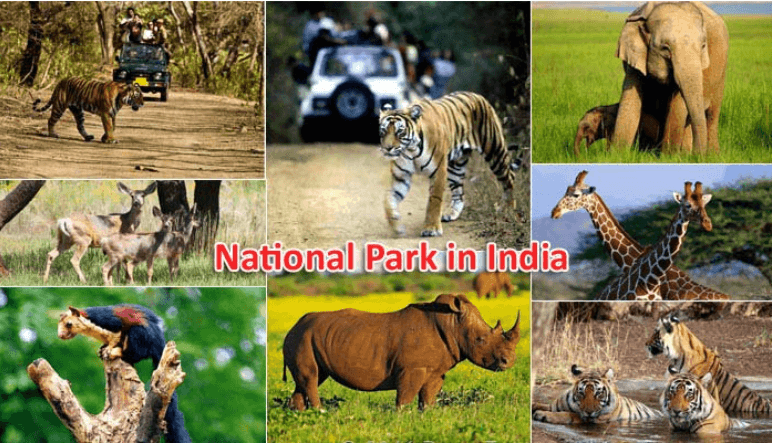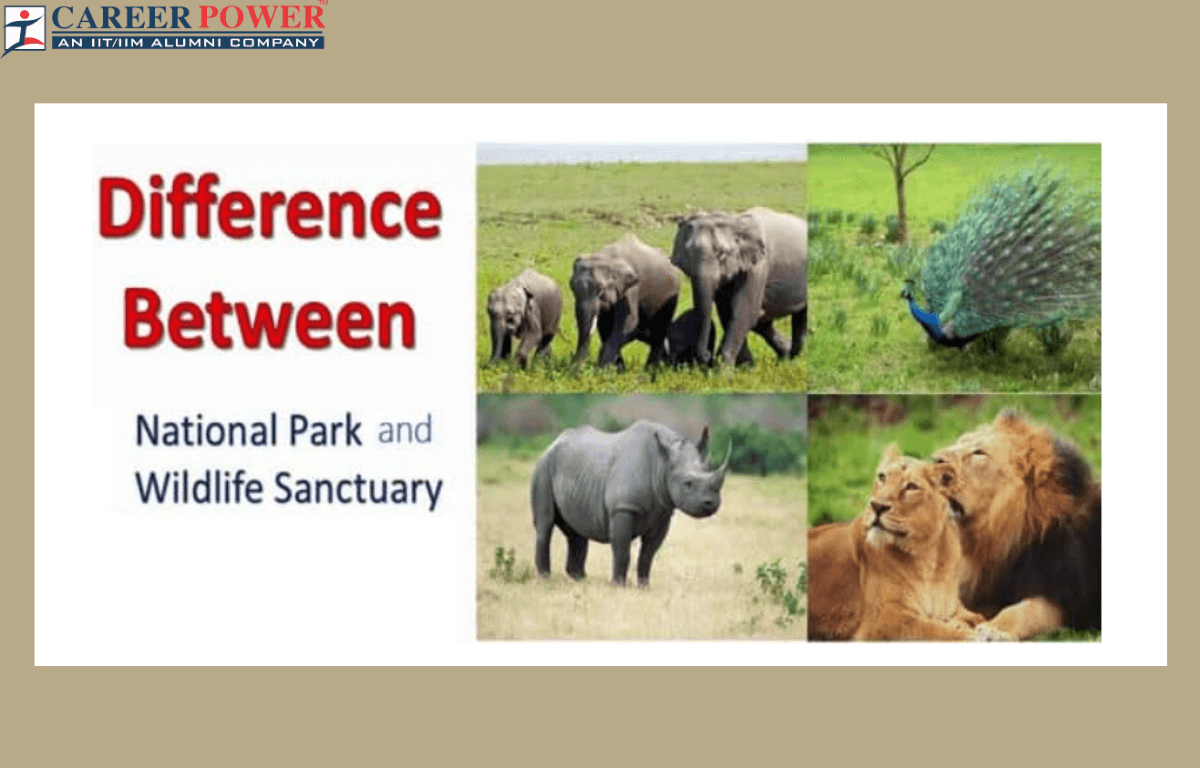Protecting plants and animals is crucial for maintaining biodiversity and ecological balance. Conservation efforts, habitat preservation, and sustainable practices are essential to ensure the survival of various species. Additionally, raising awareness about endangered species and promoting responsible behavior among humans play significant roles in safeguarding our planet’s Flora and Fauna. These plants and animals are protected and conserved in the national parks and wildlife sanctuaries. Here we have briefly discussed a few points on the difference between national parks and wildlife sanctuaries.
National Parks and Wildlife Sanctuaries
National parks and wildlife sanctuaries are protected areas created to conserve the natural environment and the wildlife within them. Both national parks and wildlife sanctuaries play crucial roles in biodiversity conservation, environmental education, and scientific research. They contribute significantly to the preservation of natural heritage for future generations.
What are National Parks?
National parks are protected areas of significant natural beauty and ecological importance, managed for conservation and reaction purposes. These areas are designated by governments to preserve and protect natural landscapes, wildlife, and cultural heritage. National parks are open to the public for recreation, education, and enjoyment, but they also have strict regulations, education, enjoyment, but they also have strict regulations in place to ensure the preservation of the environment.

Within national parks, visitors can experience a wide range of natural features, including forests, mountains, lakes, rivers, deserts, and wildlife. These parks often provide opportunities for activities such as hiking, camping, birdwatching, and other forms of outdoor recreation. The primary goal of national parks is to maintain the ecological balance of the region while allowing people to appreciate and connect with nature.
Each country may have its own system of national parks, and these parks are usually managed by government agencies or conservation organizations. The creation and management of national parks aim to protect the natural environment, promote biodiversity, and offer a place for people to enjoy the beauty of the natural world.
What are Wildlife Sanctuaries?
Wildlife sanctuaries are protected areas designed to conserve and protect the natural habitat and wildlife within a specific region. These areas are established by governments or non-profit organizations to provide a safe haven for various animal species. Unlike national parks, wildlife sanctuaries are more focused on the conservation of wildlife, although they often allow for some level of controlled human activity, such as tourism and research.

Wildlife sanctuaries are essential for the protection of endangered species and the overall biodiversity of a region. They provide a space where animals can live and thrive without the constant threat of human activities, allowing for the preservation of natural heritage for future generations.
Difference Between National Parks and Wildlife Sanctuaries
National parks and wildlife sanctuaries are both protected areas designed to conserve wildlife and natural habitats, but they both have some key differences. Both national parks and wildlife sanctuaries play crucial roles in biodiversity conservation, but they have distinct purposes and management strategies based on their specific conservation goals.
| Distinguish Between National Parks and Wildlife Sanctuaries | ||
| Criteria | National Park | Wildlife Sanctuaries |
| Purpose | National parks help in the preservation of natural landscapes and wildlife species. | Wildlife sanctuaries provide refuge to specific wildlife species. |
| Activities | Limited human activities are allowed in the National parks as they focus on ecotourism. | Human activities are restricted in the Wildlife sanctuaries to protect wildlife habitat. |
| Habitat | National parks include diverse ecosystems with various wildlife species. | Wildlife sanctuaries focus on specific habitats for particular species. |
| Conservation Focus | Biodiversity, ecological processes, and habitats. | Primarily aims at conserving specific animal species. |
| Management | Nation parks are managed by government bodies and conservationists. | Wildlife sanctuaries are managed by wildlife authorities and local communities. |
| Human Presence | Restricted and regulated to minimize disturbance. | Controlled, with some areas accessible to the public. |
| Size | National parks are generally larger in size, covering vast areas. | Wildlife sanctuaries are smaller in comparison, focusing on specific areas. |
| Regulation | Stringent rules to preserve natural conditions. | Rules to protect specific wildlife and their habitats. |
| Examples | Examples of national parks are Yellowstone National Park (USA), Jim Corbett National Park (Uttarakhand), Kaziranga National Park (Assam), etc. | Examples of wildlife sanctuaries are Periyar Wildlife Sanctuary (India), Masai Mara (Kenya), Manas Wildlife Sanctuary (Assam), etc. |
Importance of National Parks and Wildlife Sanctuaries
National parks and wildlife sanctuaries play a crucial role in preserving biodiversity and maintaining the ecological balance. National parks and wildlife sanctuaries are essential for the health of our planet, the preservation of biodiversity, and the well-being of both wildlife and human communities. Their conservation efforts are vital in the face of increasing threats to the natural world. Here are some key reasons highlighting their importance:
- Biodiversity Conservation: National parks and wildlife sanctuaries provide safe haven for a wide variety of plants and animal species. They protect endangered and threatened species, helping to maintain biodiversity.
- Preservation of Ecosystems: These protected areas conserve different ecosystems such as forests, wetlands, grasslands, and marine environments. Preserving these ecosystems is vital for the overall health of the planet.
- Research and Education: Scientists and researchers often study these areas to learn more about various species and ecosystems. This knowledge is crucial for scientific understanding and education.
- Ecotourism and Recreation: National parks and wildlife sanctuaries attract tourists and nature enthusiasts, generating revenue for local economies. Tourism encourages awareness about the importance of conservation and often supports local communities.
- Climate Regulation: Healthy ecosystems, as found in national parks, absorb carbon dioxide and play a role in regulating climate change by acting as carbon sinks.
- Water Conservation: Many wildlife sanctuaries and national parks are sources of rivers and streams. By protecting these areas, we ensure a clean and sustainable supply of water for both wildlife and human populations.
- Natural Beauty and Aesthetic Value: Apart from their ecological importance, national parks and wildlife sanctuaries are often areas of stunning natural beauty. Preserving these areas ensures that future generations can enjoy the aesthetic value of nature.
- Preventing Extinction: By providing a protected environment, these areas help prevent the extinction of endangered species. They offer a safe space for these animals to breed and thrive, increasing their chances of survival.
For more information, you can also go through our article on National parks in India. As in this article, we have briefly discussed about Distinguish between national parks and wildlife sanctuaries in India.



 50 Vegetables Name for Kids in English a...
50 Vegetables Name for Kids in English a...
 Food Chain: Definition, Types, Examples,...
Food Chain: Definition, Types, Examples,...
 Human Respiratory System: Definition, Di...
Human Respiratory System: Definition, Di...













